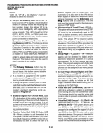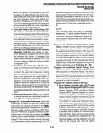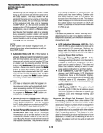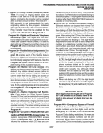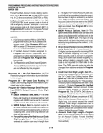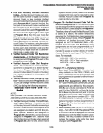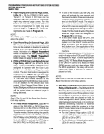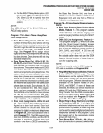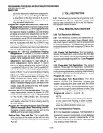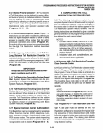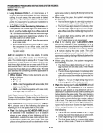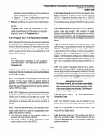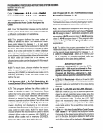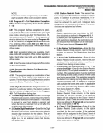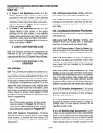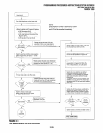
PROGRAMMING PROCEDURES-INSTRUCTIONS/SYSTEM RECORDS
SECTION 100-816-302
MARCH 1993
tal and/or electronic telephones assigned in
this program will ring. See Program 77-2for
a description of the door phone A, B, and C
numbering scheme. Door phones will not
ring standard telephones.
2 TOLL RESTRICTION
Program 80-Digital and Electronic Telephone
Ringing Tones: Distinctivesystem ringing sends
a different ring tone for CO line ringing than that
for intercom ringing. In addition, CO line ringing
at digital and electronic telephones can be dif-
ferent from one phone to another. Two choices
are available; one is 500 Hz modulated with 640
Hz (PERCEPTION ring tone), while the other is
600 Hz modulated with 800 Hz (STRATA ring
tone). Two digital or electronic telephones that
are close in proximity can then have distinctive
CO line ringing, as chosen with this program.
Programs 81
w 89-CO Line/Station Ringing
Assignments: A number of CO line-to-station
ringing patterns can be programmed into the
system. Nine categories exist, which are DAY
IMMEDIATE, DAY DELAY 1, DAY DELAY 2,
DAY2 IMMEDIATE, DAY2 DELAY 1, DAY2
DELAY 2, NIGHT IMMEDIATE, NIGHT DELAY
1, and NIGHT DELAY 2. DAY, DAY2 and NIGHT
refer to the three modes of the Night Transfer
button. DELAY 1 is a 12-second delay of ringing
signal to a digital or electronic telephone, and
DELAY 2 is a 24-second delay of ringing. The
delay functions are mainly used in CENTREX
applications but can be used for other situ-
ations. If delayed ringing occurs, the station that
initially rings will continue to ring with subse-
quent delayed-ring stations.
2.01 The following provides the programmer with
an overview of the Toll Restriction feature and
step-by-step instructions to fill in the Toll Restric-
tion System Record Sheets.
3 TOLL RESTRICTION OVERVIEW
3.00 Toll Restriction Methods
3.01 Toll Restriction screens and selectively re-
stricts outgoing calls using three different meth-
ods. Each type of restriction can be programmed
for individual stations. Toll Restriction can also be
enabled/disabled for each outgoing CO line in the
system.
3.02 Simple Toll Restriction: The first method,
Simple Toll Restriction, only involves the first digit
dialed. The system can be programmed to reject
outgoing calls beginning with 0 or 1 (see Program
48).
3.03 Three-digit Toll Restriction: The second
method, Three-digit Toll Restriction, involves the
system analyzing the area code dialed, and selec-
tively allowing/disallowing outgoing calls following
the criteria defined in Area Code Tables 1 - 4 (see
Program 46, codes 2 - 4).
Program 93-CO Line Identification: This pro-
vides alphanumeric names (to appear on LCD
telephones) to CO lines, such as “WATS BAND
5,” “FX TO NY,” “MR JONES,” etc. The names
may be up to 16 alphanumeric characters each
and display when the CO line is being used by
an LCD station.
3.04 Six-digit Toll Restriction: The third
method, Six-digit Toll Restriction, involves the
system analyzing the area code and the office
code, and selectively allowing/disallowing outgo-
ing calls following the criteria defined in Area Code
Tables 1 - 4 and Office Code Tables 1 - 4 (see
Program 46, codes 2 - 4 and 6 - 8).
NOTE:
Program 97-Printing Program Data Through
Station Message Detail Recording (SMDR):
Contents of each program can be sent to the
SMDR port for a hard copy printout.
Setting Date, Time and Day: The current date,
time, and day of the week can be set from any
LCD digital or electronic telephone connected to
Port 00.
Standard telephones should always be forced
to use Least Cost Routing to place outside
calls. This prevents Toll Restriction defeat
when the QRCWK4RCU times out.
3.10 Toll Restriction Features
3.11 For description purposes, Toll Restriction is
divided into several components, or sub-features.
The sub-features operate independently of the
restriction methods just described, although they
may employ these methods.
2-22



